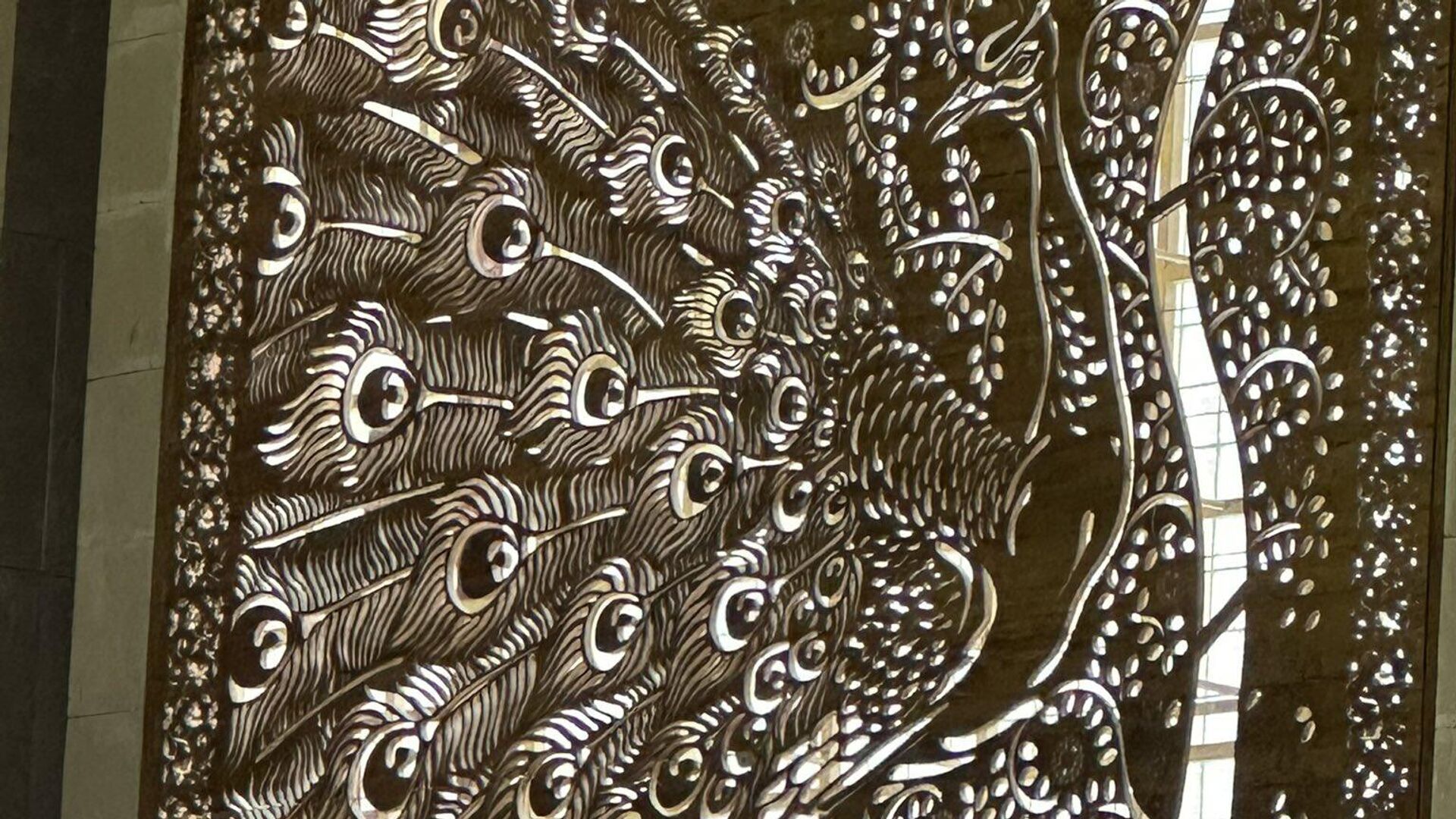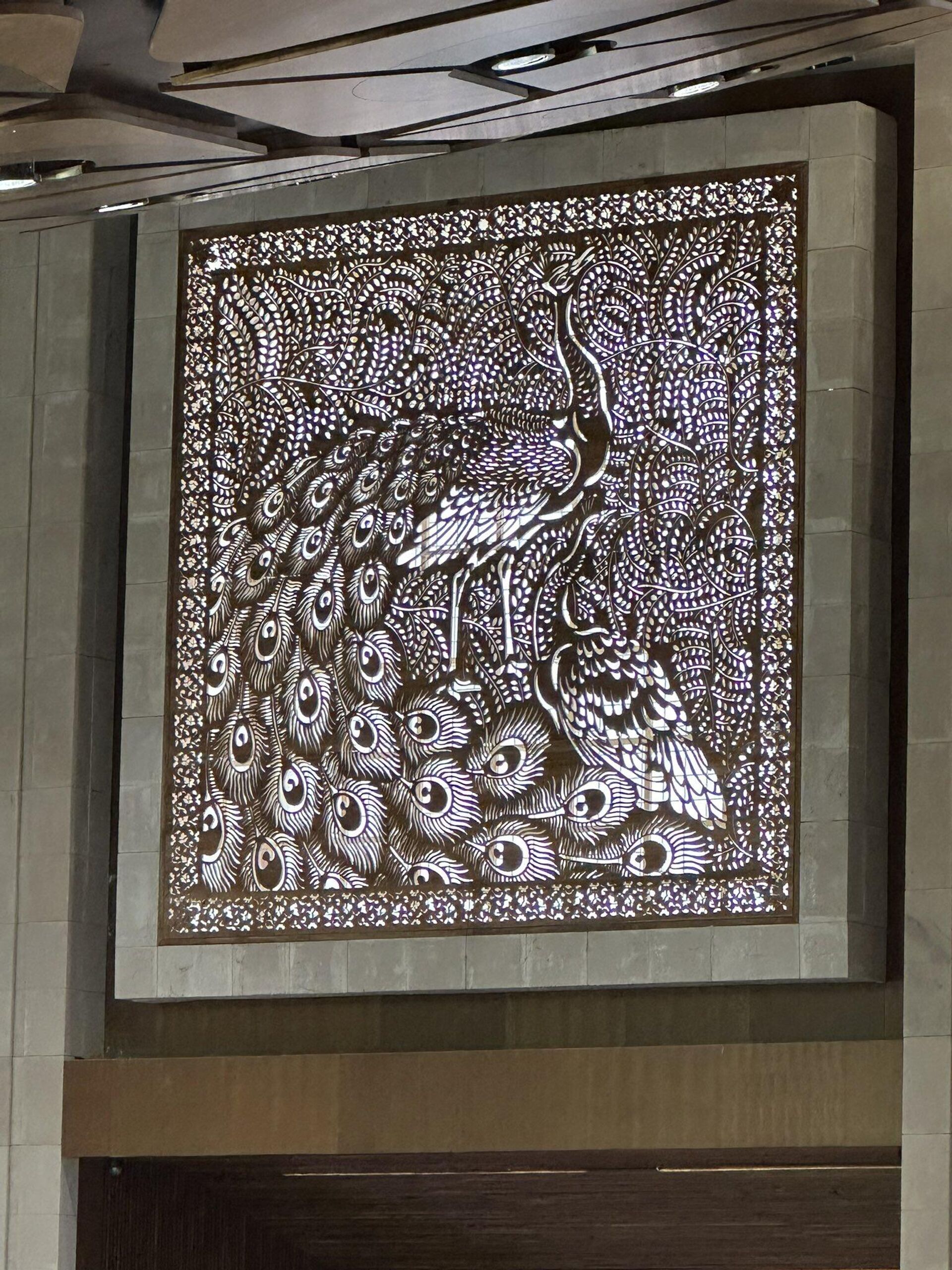https://sputniknews.in/20230531/how-900-indian-carpet-weavers-spun-artistic-motifs--designs-to-adorn-new-parliament-2259905.html
How 900 Indian Carpet Weavers Spun Artistic Motifs & Designs to Adorn New Parliament
How 900 Indian Carpet Weavers Spun Artistic Motifs & Designs to Adorn New Parliament
Sputnik India
Adorned with artistic motifs, intrinsic designs, and aesthetic color combination, the carpets were beautifully woven in sync with the architecture of both of the Parliament's houses Lok Sabha and Rajya Sabha.
2023-05-31T19:03+0530
2023-05-31T19:03+0530
2023-05-31T19:03+0530
india
art
narendra modi
lok sabha
rajya sabha
cultural heritage
uttar pradesh
indigenous production
make in india
https://cdn1.img.sputniknews.in/img/07e7/05/1f/2265670_0:592:1536:1456_1920x0_80_0_0_07594a52c012ca67d3297adf1754cd4e.jpg
The new Indian parliament building is an artistic delight since it boasts India’s unparalleled artistry in carpet weaving.As many as 900 craftsmen from Uttar Pradesh state's Bhadohi and Mirzapur villages worked for 18 months to weave 158 carpets for the Lok Sabha and 156 for the Rajya Sabha (the lower and upper houses of parliament, respectively). Thereafter, these pieces were stitched into a single magnificent carpet of semicircle shape covering 35,000 square feet (17,500 sq. ft. each).While the Lok Sabha boasts Indian agave green colour carpet with a stunning peacock symbol, representing India's national bird, the Kokum red shade rug in the Rajya Sabha displays intricate lotus motifs depicting India's national flower.Seven Months to Complete Artistic MarvelRudra Chatterjee, chairman of Obeetee Carpets, was entrusted with the mammoth task of creating a massive carpet.To accomplish this feat, he assembled a team of master craftsmen to produce these magnificent pieces.The intricacies of the craftsmanship were such that up to 120 knots per square inch were used in the weaving of these carpets. A total of over 600 million knots were woven, which took the artisans seven months to complete.The workers spent a whopping 10,00,000 (one million) man-hours, Chatterjee said.The weaving process, which commenced in September 2021, was completed by May 2022, and then the installation commenced in November 2022.India's Centuries-Old Tradition of Carpet WeavingIndia's centuries-old tradition of carpet weaving dates back to Mughal Emperor Akbar's dynasty (1556–1605), who had a great liking for carpets and brought the finest Persian artists and weavers to India.It is said that during their travel in India, a caravan of Persian artists and weavers was attacked by bandits in Uttar Pradesh state's Gopiganj town.The weavers, who survived the attack, took shelter in villages in the surrounding area, making Mirzapur famous for carpet weaving.Cut to 2023, craftsmen from Uttar Pradesh's Bhadohi and Mirzapur villages are now taking the intricate artistry forward.
india
uttar pradesh
Sputnik India
feedback.hindi@sputniknews.com
+74956456601
MIA „Rossiya Segodnya“
2023
Sangeeta Yadav
https://cdn1.img.sputniknews.in/img/07e6/0c/0f/110602_0:0:641:640_100x100_80_0_0_c298016a79eb02ef8caa9d1f688c12a5.jpg
Sangeeta Yadav
https://cdn1.img.sputniknews.in/img/07e6/0c/0f/110602_0:0:641:640_100x100_80_0_0_c298016a79eb02ef8caa9d1f688c12a5.jpg
News
en_IN
Sputnik India
feedback.hindi@sputniknews.com
+74956456601
MIA „Rossiya Segodnya“
Sputnik India
feedback.hindi@sputniknews.com
+74956456601
MIA „Rossiya Segodnya“
Sangeeta Yadav
https://cdn1.img.sputniknews.in/img/07e6/0c/0f/110602_0:0:641:640_100x100_80_0_0_c298016a79eb02ef8caa9d1f688c12a5.jpg
indian carpet weavers spin artistic motifs, designs, adorn new parliament, in sync with the architecture, lok sabha and rajya sabha, uttar pradesh, bhadohi and mirzapur villages, india's national bird, lotus motifs, central vista project, pandemic, india's century-old tradition of carpet weaving, mughal emperor akbar, persian artists and weavers, india's new parliament features premium hand-knotted carpets, india's new parliament building, india's new parliament, new parliament inauguration,
indian carpet weavers spin artistic motifs, designs, adorn new parliament, in sync with the architecture, lok sabha and rajya sabha, uttar pradesh, bhadohi and mirzapur villages, india's national bird, lotus motifs, central vista project, pandemic, india's century-old tradition of carpet weaving, mughal emperor akbar, persian artists and weavers, india's new parliament features premium hand-knotted carpets, india's new parliament building, india's new parliament, new parliament inauguration,
How 900 Indian Carpet Weavers Spun Artistic Motifs & Designs to Adorn New Parliament
Adorned with artistic motifs, intrinsic designs, and aesthetic colour combinations, the carpets were beautifully woven in sync with the architecture of both of the parliament's houses, the Lok Sabha and Rajya Sabha.
The new Indian parliament building is an artistic delight since it boasts India’s unparalleled artistry in carpet weaving.
As many as 900 craftsmen from Uttar Pradesh state's Bhadohi and Mirzapur villages worked for 18 months to weave 158 carpets for the Lok Sabha and 156 for the Rajya Sabha (the lower and upper houses of parliament, respectively).
Thereafter, these pieces were stitched into a single magnificent carpet of semicircle shape covering 35,000 square feet (17,500 sq. ft. each).
While the Lok Sabha boasts Indian agave green colour carpet with a stunning peacock symbol, representing India's national bird, the Kokum red shade rug in the Rajya Sabha displays intricate lotus motifs depicting India's national flower.
Seven Months to Complete Artistic Marvel
Rudra Chatterjee, chairman of Obeetee Carpets, was entrusted with the mammoth task of creating a massive carpet.
To accomplish this feat, he assembled a team of master craftsmen to produce these magnificent pieces.
The intricacies of the craftsmanship were such that up to 120 knots per square inch were used in the weaving of these carpets. A total of over 600 million knots were woven, which took the artisans seven months to complete.
Chatterjee, who takes pride in working on the Central Vista project, told Indian media that they began the project in 2020 right in the middle of the pandemic.
The workers spent a whopping 10,00,000 (one million) man-hours, Chatterjee said.
The weaving process, which commenced in September 2021, was completed by May 2022, and then the installation commenced in November 2022.
India's Centuries-Old Tradition of Carpet Weaving
India's centuries-old tradition of carpet weaving dates back to Mughal Emperor Akbar's dynasty (1556–1605), who had a great liking for carpets and brought the finest Persian artists and weavers to India.
It is said that during their travel in India, a caravan of Persian artists and weavers was attacked by bandits in Uttar Pradesh state's Gopiganj town.
The weavers, who survived the attack, took shelter in villages in the surrounding area, making Mirzapur famous for carpet weaving.
Cut to 2023, craftsmen from Uttar Pradesh's Bhadohi and Mirzapur villages are now taking the intricate artistry forward.




